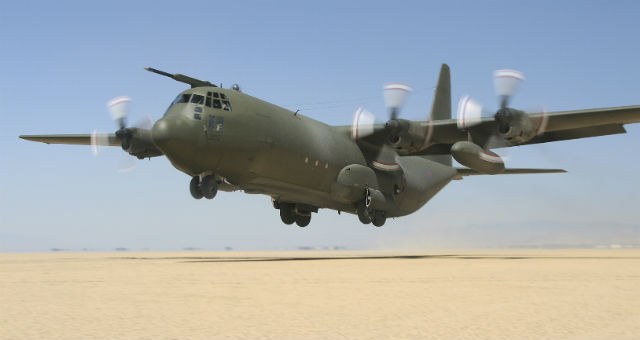The UK's Military Aviation Authority (MAA) will establish a new model for managing the safety of the armed forces' aged aircraft fleets by year-end, as several Royal Air Forces' types near retirement.
A new continuous air management model will come into effect by 31 December, which will provide "better understanding of 'tail' airworthiness" for all types down to the individual aircraft level, says Air Vice Marshal Martin Clark, the MAA's director (technical). The date coincides with the planned out-of-service date for the RAF's last Lockheed Martin C-130K tactical transports (below), and comes just months before the expected last use of its Vickers VC10 tankers and Lockheed TriStar tanker/transports.
 |
|---|
| Crown Copyright |
Decisions on whether to extend any currently targeted out-of-service dates will be taken only after balancing the risk and operational benefit of doing so, MAA officials said during the organisation's Military Air Safety conference in London in late October.
The MAA was formed in April 2010, on the recommendation of the Haddon-Cave report into the loss of RAF British Aerospace Nimrod MR2 XV230 during a mid-air explosion over Afghanistan in September 2006. The investigation found that a new safety case written for the type in 2001 had failed to identify critical design flaws with its inflight refuelling system.
Tasked with overseeing the air safety governance of in-service equipment and also for supporting the acceptance process for new platforms, the organisation has more than 200 staff. "This is meant to be a change in culture, not just ticking boxes," says MAA director general Air Marshal Timo Anderson. "We want to be best of breed - international."
With full safety cases rewritten for legacy types, the MAA "can now assure the secretary of state [for defence] that kit is safe, or if there is a risk, he knows about it", says Royal Navy Admiral Simon Charlier, its director (operations).
Meanwhile, a new Defence Aviation Error Management System, which involves the self-reporting of incidents under a "just culture" model is also being introduced, including with the Eurofighter Typhoon. "Picking up the near misses is pivotal to avoiding the catastrophes," Anderson notes.
Source: Flight International



















